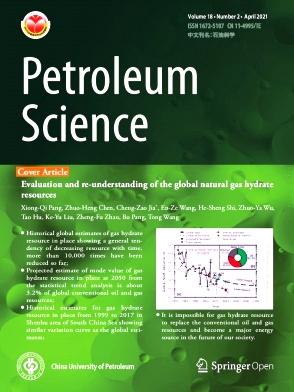Evaluation of SC-CO2–brine on the micro-mechanical properties of lamina shales by micro-scratch test
IF 6
1区 工程技术
Q2 ENERGY & FUELS
引用次数: 0
Abstract
The mechanism of SC-CO2–brine–rock interaction (SCBRI) and its effect on the mechanical properties of shale are crucial for shale oil development and CO2 sequestration. To clarify the influence of SCBRI on the micromechanics of shale, the lamina and matrix of shale were saturated with SC-CO2–brine for 2, 4, 6, and 8 days, respectively. The micro-scratch technique was then used to measure the localized fracture toughness before and after SC-CO2–brine saturation. Combining the micro-scratch results with SEM-QEMSCAN-EDS analysis, the differences in mineral composition and mechanical properties of lamina (primarily composed of carbonate minerals) and matrix (primarily composed of clay minerals) were studied. The QEMSCAN analysis and micro-scratch results indicate distinct mineralogical compositions and mechanical properties between the lamina and the matrix. The results showed that: (1) SCBRI leads to the decrease in carbonate mineral content and the significant increase in matrix porosity and laminar cracks. In addition, the damage degree increased at saturation for 6 days. (2) SCBRI weakens the mechanical properties of shale. The scratch depth of laminar and matrix increased by 34.38% and 1.02%, and the fracture toughness decreased by 34.38% and 13.11%. It showed a trend of first increasing and then decreasing. (3) SCBRI enhances the plastic deformation behavior of shale, and the plastic index of lamina and matrix increases by 18.75% and 21.58%, respectively. These results are of great significance for evaluating the mechanical properties of shale oil and gas extraction by CO2.
通过微划痕试验评估 SC-CO2 盐对层状页岩微机械特性的影响
本文章由计算机程序翻译,如有差异,请以英文原文为准。
求助全文
约1分钟内获得全文
求助全文
来源期刊

Petroleum Science
地学-地球化学与地球物理
CiteScore
7.70
自引率
16.10%
发文量
311
审稿时长
63 days
期刊介绍:
Petroleum Science is the only English journal in China on petroleum science and technology that is intended for professionals engaged in petroleum science research and technical applications all over the world, as well as the managerial personnel of oil companies. It covers petroleum geology, petroleum geophysics, petroleum engineering, petrochemistry & chemical engineering, petroleum mechanics, and economic management. It aims to introduce the latest results in oil industry research in China, promote cooperation in petroleum science research between China and the rest of the world, and build a bridge for scientific communication between China and the world.
 求助内容:
求助内容: 应助结果提醒方式:
应助结果提醒方式:


